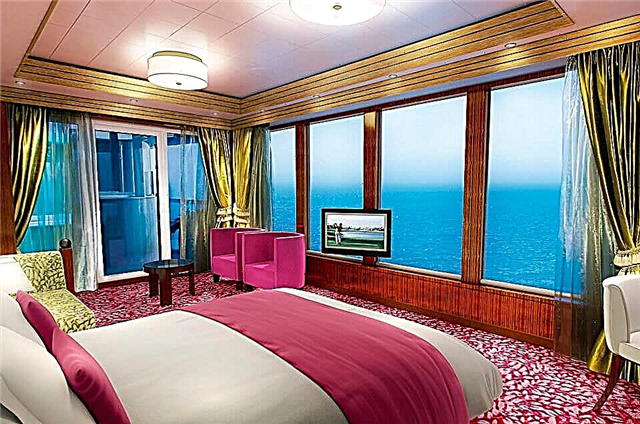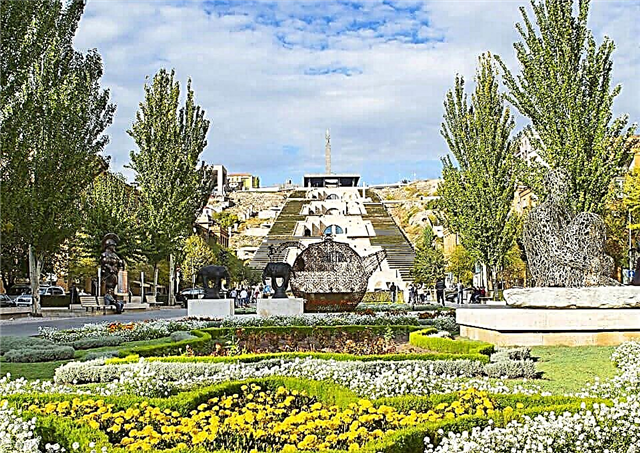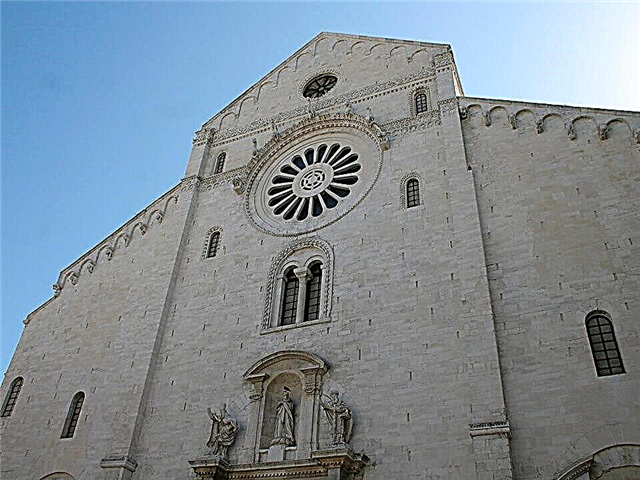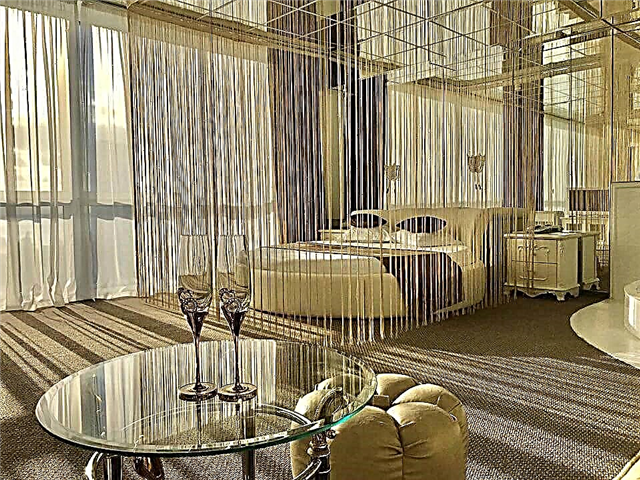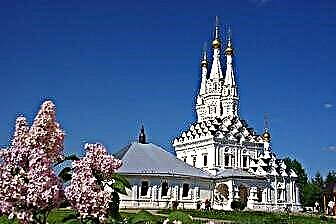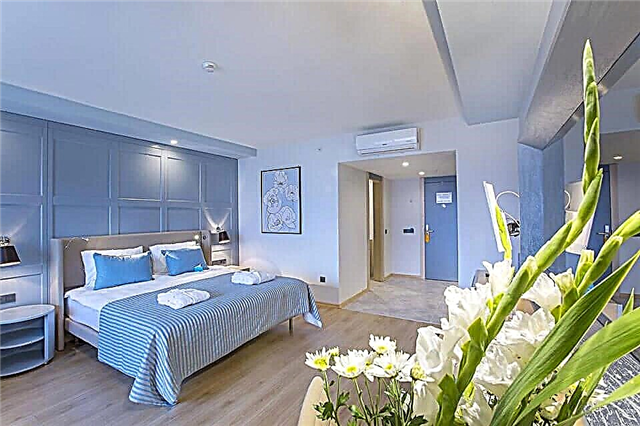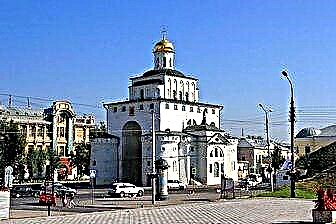Vladimir is the ancient capital of Russia, once a mighty settlement, and now - one of the most visited cities of the "Golden Ring". Before the rise of Moscow, it was the spiritual and cultural center of the Vladimir-Suzdal land. Those glorious times are reminiscent of the majestic 12th century cathedrals included in the UNESCO World Heritage List, and the monasteries that have been chronicling for more than a hundred years.
The historical center of the city, located on a hill above the Klyazma, seems to still remember the reign of Vsevolod the Big Nest and the genius of the great icon painter Andrei Rublev, who painted the walls of the Assumption Cathedral.
No less interesting are the later monuments of architecture: the classic urban mansions of the 19th century and the original buildings of the early 20th century. After walking around Vladimir, you should definitely go to museums to get to know the ancient and rich history of this city.

The best hotels and hotels at affordable prices.
from 500 rubles / day
What to see and where to go in Vladimir?
The most interesting and beautiful places for walking. Photos and a short description.
Cathedral Square
The historical center of the city, located on a hill near the Klyazma, where the ancient Assumption and Dmitrievsky churches, the building of the City Duma and the former provincial "Chambers" are located. In the middle there is a monument to the 850th anniversary of Vladimir, erected in 1958. The sculptural group is a white pyramid with figures of a Russian warrior, artisan and modern worker arranged in a circle, symbolizing the unity of the past and the future. Another famous monument is the monument to the legendary icon painter Andrei Rublev, erected in 1995 for the thousandth anniversary of Vladimir. The sculptor depicted a master deeply immersed in his work.

Assumption Cathedral
A grandiose and rather rare monument of pre-Mongol white-stone architecture (XII century). Long before the rise of Moscow, it was the main temple of Vladimir-Suzdal Rus. Here the great dukes were married to the kingdom. The cathedral is unique in that the original frescoes by Andrei Rublev have been preserved inside. Since 1992, the Assumption Cathedral has been recognized by UNESCO as part of the World Cultural Heritage.

Church of the Intercession on the Nerl (Bogolyubovo)
The temple is located about 10 km. from Vladimir, not far from the village of Bogolyubovo. The church was erected in 1165 (according to another version - in 1158) in memory of the deceased heir to Prince Izyaslav Andreyevich. The building is located in a hollow on a man-made hill, near which the Nerl River previously flowed into the Klyazma. The building belongs to the cross-domed temples with one main dome and three apses.

Dmitrievsky Cathedral
The building was built at the end of the 12th century at the behest of Prince Vsevolod the Big Nest. In 1237 it was plundered by the Mongol-Tatars, in the following centuries it burned several times, so many of the original architectural and interior details were lost. During the not entirely successful restoration of the 19th century, the would-be masters completed the job by destroying the ancient frescoes and installing a new iconostasis. In the XX century, it was possible to partially restore the historical appearance of the temple.

Golden Gate
One of the five passages to the city, erected during the reign of Prince Andrei Bogolyubsky. At that time, the Golden Gate opened the entrance to the richest part of Vladimir. Once their wooden doors were covered with gilded copper plates, hence the name. At the top of the structure is a small chapel of the Position of the Robe of Our Lady. In the XII century, the gate was part of a complex of city defensive structures.

Park named after A.S. Pushkin
The square is located next to Cathedral Square. It is one of the favorite walking spots as it is surrounded by historical sites. The park appeared at the beginning of the 19th century, in 1899 it was named after A.S. Pushkin in honor of the anniversary of the great poet. There are also several monuments on the territory, but what is noteworthy is that there are no statues of Alexander Sergeevich himself here.

Monument to Prince Vladimir and Saint Fyodor
The monument is located in the park. A. Pushkin in the middle of a panoramic observation deck, from where a magnificent view of the Klyazma and the old, built up with wooden houses, districts of the city opens. The monument was erected in 2007, its opening was timed to coincide with the 850th anniversary of the transfer of the capital of Russia from Kiev to Vladimir. The sculptural group was sculpted by the Moscow master S. M. Isakov. It consists of the figures of Prince Vladimir on a horse, dressed in full armor, and standing behind Saint Theodore.

Lipki Park
The oldest square in the city. It is combined with the park. Pushkin and forms a common recreational space with the latter (they were connected in 1925). The first plantings appeared here in 1901 as part of the Vladimir landscaping program, launched under Nicholas I. In the center there is a fountain, from where cobbled walking alleys radiate out like rays, and a children's playground.

Patriarchal Garden
Another green area in the center of Vladimir, perfect for walking and admiring the sights. The garden is surrounded by hills on all sides, creating a unique microclimate on its territory. A large number of plants grow on a relatively small area of 3 hectares. The history of the place began in the 16th century, when a cherry alley was planted here especially for the patriarch.

Water tower
A monument of industrial architecture of the early XX century, built of red brick by the project of engineer S. Zharov. Since the 1950s, the tower has ceased to be used for its intended purpose after the modernization of the city's water supply system. Since 1975, the building houses the Old Vladimir Museum, dedicated to the life of a provincial town in the 19th-20th centuries. There is an observation deck on the top floor.

Trinity Church
A former Old Believer church built in the neo-Russian style in 1913-16. The building has not been used for its intended purpose since 1928 after its closure; since 1975 it has housed the permanent exhibition “Crystal. Lacquer miniature. Embroidery ", belonging to the Vladimir-Suzdal Museum-Reserve. The exposition includes works of art created by masters from Moscow and the Vladimir region.

Church of the Holy Rosary
Catholic cathedral, erected at the end of the 19th century according to the project of architects I.O. Karabutov and A.P. Afanasyev in the style of pseudo-Gothic. The building was built of red brick and decorated with pointed arches, stained glass windows and graceful turrets. The roof is crowned with a pointed spire. In 1934, the church was closed, for some time an exhibition hall worked in the premises, in 1992 it was returned to the Catholic community.

Nikitskaya church
Temple of the XVIII century, built at the expense of the merchant Semyon Lazarev. For Vladimir, it is considered a rather atypical religious building, as it is made in accordance with the canons of the "provincial" baroque and its forms rather resembles a noble mansion. It is believed that before the appearance of the stone building there was a wooden church of Cosmas and Demian on this site, and even earlier - a monastery.

Nicholas Kremlin Church
Temple in honor of Nicholas the Wonderworker, located in the central part of Vladimir. Several centuries ago, the buildings of the city Kremlin were located in its place, hence the modern name of the church. It is believed that the first structure was erected in 1626, but a century later it was destroyed by fire. The temple of 1769, completed in 1850, has survived to this day. The building is made in the Baroque style. Since 1962, the city planetarium has been located on its territory, where lectures are held and "star performances" are shown.

Dormition Knyaginin monastery
The women's monastery of the 13th century, formed under Vsevolod the Big Nest by the will of his wife, Princess Maria. During such a long history, the monastery suffered many hardships: it burned several times, was ruined, and was liquidated in the 20th century. The revival of monastic life took place in 1993. At the moment, several dozen sisters live in the monastery.

Theotokos-Rozhdestvensky monastery
Before the foundation of the Trinity-Sergius Lavra, the Mother of God-Christmas monastery was the center of monastic and spiritual life in North-Eastern Russia. The first mention of it dates back to the XII century and is associated with Vsevolod the Big Nest - it is believed that it was he who laid the foundation for the monastery. Before moving to the Alexander Nevsky Lavra, the remains of Prince Alexander Nevsky were buried here.

Bogolyubsky monastery (Bogolyubovo)
Convent in Bogolyubovo, occupying the territory of the castle of Prince Andrei Bogolyubsky - a unique monument of civil construction, preserved from the time of ancient Russia. Presumably, the monastery was organized here in the XIII century, before that the complex housed a princely court. The architectural ensemble includes several cathedrals, erected at different times, and the remains of civil structures.

Historical Museum
The museum exposition is housed in a pseudo-Russian style building, which was erected at the beginning of the 20th century. At the moment it is listed as a cultural heritage site. The collection, which occupies two floors, does not contain many exhibits, but it is quite interesting, since it presents the history of the Vladimir region from the Stone Age to 1917. Many interesting original items from different eras are exhibited here.

"Gingerbread Museum"
There are gingerbread museums in many Russian cities. So Vladimir decided not to stand out and presented to the guests his own exposition dedicated to this old Russian delicacy. The sweet collection consists of products prepared according to traditional recipes - there are printed, molded and cut gingerbread. For visitors, master classes are held, as well as tea drinking with tasting.

"Spoon Museum"
A young private museum that opened in 2015. As the name suggests, his collection is all about the spoon. Here are presented luxurious appliances made for the imperial house, church tableware, ancient "ancestors" of modern spoons and other interesting exhibits. Visitors will also learn about the history of this product, various techniques of its manufacture and will hear many entertaining stories from the guides.

House-Museum of brothers Stoletov
The museum is located on the territory of a 19th century wooden house located in the center of Vladimir. The exposition is dedicated to the Stoletov family of merchants, from where two famous brothers came out: Alexander Grigorievich, a physicist who won world fame, and Nikolai Grigorievich, a general and military leader, a national hero of Bulgaria, who took an active part in the liberation war against Ottoman rule.

Forge of the Borodins
A family forge-museum, where craftsmen work with the observance of ancient technologies. Tours and master classes are organized here for tourists. Visitors are always satisfied and delighted at the sight of traditional anvils, a red-hot flame, which, like hundreds of years ago, is kindled by hand, and from the bewitching look, concentrated work of blacksmiths who make real masterpieces.

Vladimir Regional Drama Theater
The city acquired its own theater stage in 1848 thanks to the provincial artist I. Lavrov, who suggested that the city authorities organize a "booth" and invite an acting troupe to perform. The modern building was erected in the 1970s, and the stage is located here to this day. The Vladimir theater is famous, first of all, for the fact that since 2012 the festival "At the Golden Gate" has been held here.

Public places building
The complex of buildings is an architectural monument of the 18th century. The ensemble was built according to the project of K. I. Blank in the classical style. In the 1830s, it housed bureaucratic offices, the second floor housed the judiciary and the treasury. In Soviet times, they did not change traditions and placed administrative institutions on the territory. Back in the 19th century, the nickname "Chambers" was firmly attached to the building.

Vladimir Central
A prison founded by the decree of Catherine II in the 18th century. It became known as "Central" in 1906. In imperial Russia, the torture chamber regularly performed its functions of keeping especially dangerous criminals. Under Soviet rule, practically nothing changed, and the institution continued its work. The prison is known to almost every Russian thanks to the popular song of M. Krug "Vladimirsky Central". Since 1996, a museum has been operating on the territory.

Complex "Trading Rows"
Shopping center located in the building of Gostiny Dvor. A hundred years ago there were merchant shops with various goods, and there was a brisk trade. Today, practically nothing has changed: in numerous stores, sellers still offer goods to customers. The Gostiny Dvor complex was erected at the end of the 18th century in several stages, in the 20th century it was reconstructed, while significantly damaging its historical appearance.

City Duma building
The building was built at the beginning of the 20th century according to the project of Ya.G. Revyakin. In addition to the administrative bodies, there were also shopping arcades occupied by merchant tenants. After the Revolution of 1917, the building housed the city council, in the period 1948-85 - the House of Pioneers. After the reconstruction in 2008, a restaurant, a concert hall, a hotel and premises for receiving delegations appeared here.

Old pharmacy
Pharmacy of 1805, located near the St. George Church in the pedestrian zone of the historic center of Vladimir. Surprisingly, this institution worked properly until 2010, without changing its profile. The building itself is a small rectangular structure with a semicircular entrance. The first floor, where the trading floor was located, is lined with stone, the second with living quarters is made of wood.

Ferris wheel "Sky 33"
A modern attraction, which is one of the 10 largest wheels in Russia. The height of "Sky 33" is 50 meters, a full revolution takes 15 minutes. During this time, visitors will be able to fully enjoy the panorama of Vladimir. Up to 70% of the city's area is visible from the highest point. The wheel is equipped with 32 closed booths for six people. The attraction is open to the public all year round.

Observation decks on Georgievskaya
Georgievskaya Street is a pedestrian alley in the center of Vladimir, along which many city attractions are located. Local residents call it "Vladimir Arbat". For the first time in documents, this place is mentioned in the 17th century. Especially for tourists, there are two observation platforms on the street, from where a view of the banks of the Klyazma River and the magnificent Assumption Cathedral opens up.




